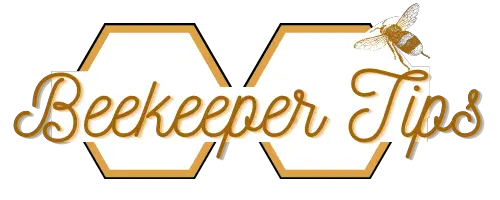The types of natural beehives are really determined by the places bees decide to build their nests. Different locations require that the bees employ different techniques to make sure that their hive is safe and healthy. In this article, we will explore how the nesting site influences the type of natural beehive the bees build.
Table of Contents
A Note On Species Of Honeybees
There are many species of honeybee that build honeycombs. The bee we normally refer to as a “honeybee” is the western cavity-nesting bee – Apis mellifera. There are many other species of honeybee in the world, and some of these nest hanging from trees, or little branches in shrubs or cliffs. In this article, we will look at the types of natural beehives built by the western honeybee, Apis mellifera. This honeybee is now introduced to most of the world, hence it is now prevalent in the Americas, Australia, New Zealand, and South, and East Asia.
Types Of Natural Beehives
Apis mellifera honeybees are very opportunistic. They basically look for a cavity in which to build a nest. In some cases, if they cannot find a cavity to build a nest in, they will build a nest under an overhang or some other protection. In the event that they get stuck without any place to build a nest, they can actually just build a nest in some branches in a bush or hedge.
Myself removing African bee combs from an old oak tree in 1998. This is one of the more common types of natural beehives.
Hollow Tree Trunk
A hollow tree trunk is probably the single most common nesting site for much of the natural history of the honeybee. Throughout the forests of Africa and Europe hollows in trees were the nesting sites of choice for bees. In many cases, these hollows are made by wood carpenter bees and then woodpecker and similar birds burrowing out holes in rotting or softwood trees. Fungi help to weaken trees as well.
Learn more about: Who To Call For A Beehive Removal
If we look at Europe, the mighty Oak trees that grew in ancient forests would she branches in storms – the broken-off branch stumps would slowly rot over a period of decades to centuries. Then various insects and birds and other creatures would enlarge the holes in the trees and eventually bees would move in. The bees have a healing effect on a tree. Woodpeckers actually transport fungus that helps enlarge holes in trees. When bees move into a tree they coat the inside of the hole they occupy with propolis which is a natural antifungal agent.
In much of Europe, the ancient forests have been turned into ships, wine barrels, old age homes, parking lots, highways, and all the lovely things that we call development. Bees now have to find other places.
In Africa, there are a lot more things that burrow and make holes in trees. Elephants break branches off, and many species of birds and insect-like to burrow into trees in the Miombo woodlands of central Africa this means that you can have densities of 10-100 hives or more per square mile. Sadly many of these forests have now been logged and exported to China to be turned into chipboard and sent back to the world as boring bland furniture that lasts 10 years and gets sent to the landfill. In Africa, much like in Europe, bees have to adapt to habitat loss and other types of natural beehives have become more common.
Skulls
This may sound a bit nuts, but elephant and most likely woolly mammoth skulls make excellent beehive cavities. I have seen beehives in elephant skulls. I have seen a beehive in a whale skull once in the sand dunes. A large animal typically has a perfect skull for bees! This is one of the more macabre types of natural beehives.
Ground Cavities
Bees are fond of nesting in burrows of other animals. Creatures such as pigs, wild boars, aardvark, rabbits, and various others burrow underground. Bees can adopt these burrows and set up hives in them. So-called ground hives are very common in the Savannah regions of Africa and in the semi-arid regions such as the Karroo. I have seen hives in these holes that can yield 200 or more pounds of honey after exceptional rains. The San people are excellent at finding and robbing such hives.
My first memory of honey gathering was actually of a Xhosa man, who, due to his limited ability to understand things, was called PawPaw by his family. This is basically a funny word for papaya. They meant that his head was big and full of pips. PawPaw was not very bright, and the only thing that made him happy was robbing wild beehives.
I remember watching PawPaw reach into one of my favorite types of natural beehives. A hole in a riverbank that had been made by some birds. Bees had moved in. He pulled out big handfuls of delicious honeycomb. I was stung and had an adverse reaction. The doctor told me I was “allergic” to bees and that if I ever got stung again I would die. 35 000 stings later and this has not happened yet.
Read more about Ground Bees In Wisconsin
Cliff Hives
Bees love nesting in caves and cliffs. There are always delightful crevices and cracks in cliffs for bees to nest in. Some of the earliest paintings of our ancestors gathering honey are actually preserved in caves around Europe and Africa and show how important honey was then and how this was one of the best types of natural beehives.
I have a memory when I was a student when I took some guys from an affiliate of the Discovery Channel to climb up a cliff and video some bees in a hive. Somehow the camera fell and it was an expensive catastrophe. But the footage sold very well. Two days later the filmmaker’s other camera got eaten by a hyena so his insurance company was underwhelmed.
Myself removing bees from a few stories up in a building. As we cut down trees and replace them with buildings, wall hives are becoming one of the most common types of natural beehives. Note: Do not assemble your own scaffolding! Qualified people should do this. You can see my scaffolding work was a bit erratic and that scaffold collapsed against the wall adjacent – a rather scary event for me.
Add Human Creativity To The Mix and The Number Of Options For Hives Increases!!
I have over the years performed hundreds of bee removals. Bees tend to love things made by humans! We create lots and lots of perfect nesting sites for them to build their colonies in. Dog kennels, owl boxes, bat boxes, post boxes, water mains, cable junction boxes, automobiles, airplanes, tanks (both the ones to store things and the ones that shoot things) old bomb casing (yes I have removed a beehive from an old bomb casing), suitcases, a bedside toy box filled with cringe-worthy adult toys embedded in the honeycomb is a sight I still cannot remove from my retina, houses, fridges, wine barrels, hollow poles, wind farm towers, and the list goes on and on!
FAQs
How big is a natural beehive?
Natural beehives are defined by the type of space they nest in and the availability of nectar and pollen resources. This means that a beehive in a large cavity in a rich forest could be very large and contain hundreds of pounds of honey, brood and bees. Similarly, a beehive in a resource poor area could be very small. In some cases, bees may occupy a small cavity in a tree in an area with abundant resources. In this case, the small hive will become a swarm farm and just convert resources into swarms which are thrown out into the wild constantly. The reason the bees do this is because the hives get plugged with honey, causing swarming, and then this helps to empty the hive and so the cycle goes on.
What does a healthy beehive look like?
A healthy beehive should be full of bees and the bees should be "sticky" which means they clump together and don't fly out of the hive for little reasons when you open the hive. The frames should be covered with bees, and there should be lots of brood and pollen. If you take out a capped brood frame the frame should have very few uncapped cells in it.
How quickly do beehives grow?
Beehives can grow very quickly if there is abundant nectar and your queens are healthy. I have seen hives grow into huge hives in a few weeks during very strong honeyflows. In an area with weak nectar supplies and poor conditions, a beehive can not grow at all, or even worse, actually abandon the site. For an average location, work on a hive being able to produce one split a season, or one swarm, an 40-80lb of honey. This is really a thumb suck and will vary hugely from place to place.
How often do you need to check a beehive?
If you are asking this question, as little as possible. Beginner beekeepers cause a hive more damage than good every time they open the hive. So in this case the Spring, early summer and fall inspections are probably the best! If you have gained some experience, you can eventually get to the point where you can open hives weekly and manage them intensively without causing them harm. Often you find beginner beekeepers open the hive every three days and stare optimistically into the hive hoping that something has happened. This causes the bees more stress than is neccessary.

Dr. Garth A. Cambray is a Canadian/South African entrepreneur and beekeeper with 28 years of experience in apiculture and specializes in adding value to honey. His Ph.D. research developed a new advanced continuous fermentation method for making mead that has resulted in a number of companies globally being able to access markets for mead. His company, Makana Meadery, exports honey mead to the USA where it is available to discerning connoisseurs. He has also developed technologies to commercially manufacture organic honey vinegar in Zambia for export globally. He holds a few patents globally in the ethanol industry and believes in technology and knowledge transfer for human development and environmental sustainability. One of his proudest achievements is the fact that the wind farm he started at one of his old apiary sites has essentially made his hometown carbon neutral.





